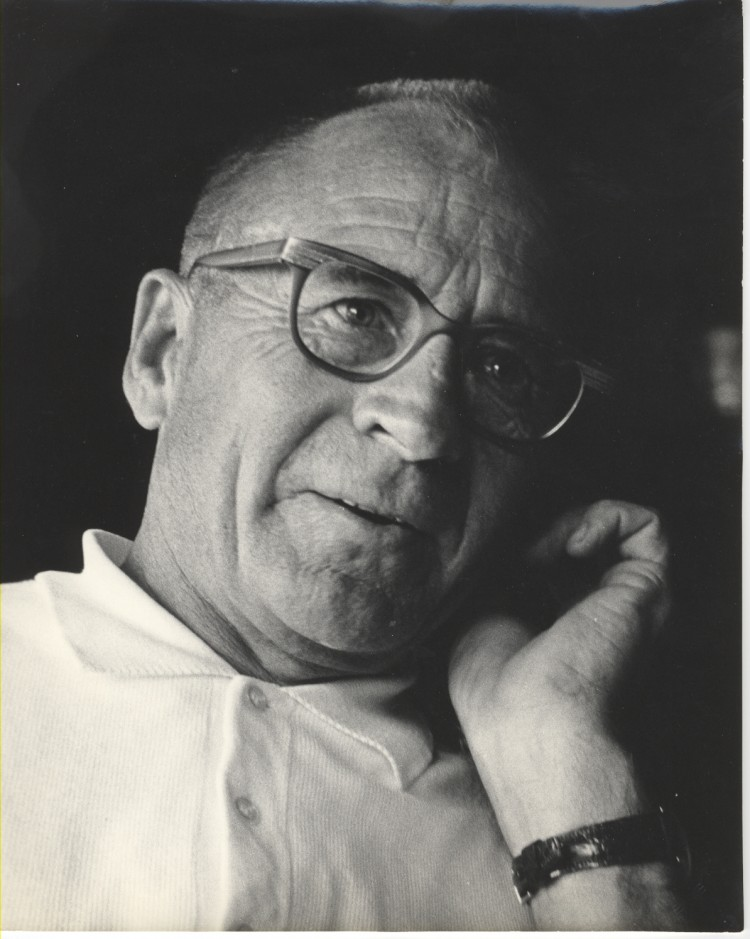Penn Jones
Here is a letter from the October 13, 1967, issue of the Texas Observer that addresses the supposed mysterious deaths.
Penn Jones then replied in the October 27, 1967, issue:
Nation: The Mythmakers
Friday, Nov. 11, 1966
For many who believe that there was a conspiracy to assassinate John Kennedy in Dallas, the most mesmeric argument of all is that an extraordinary number of people involved in the case —however remotely—have since lost their lives under mysterious circumstances. As of last week, the toll had, in fact, reached 14. To conspiracy theorists, the clear implication is that the victims knew too much and were systematically liquidated.
Chief mythologist and drumbeater for this theory is Penn Jones Jr., 52, the diminutive (5 ft. 2¼ in.) editor of a Texas weekly newspaper, the Midlothian Mirror (circ. 765). In 1965, Jones began a seemingly inexhaustible Mirror series intended, as he put it, to "bring into some intelligible whole all the events surrounding the assassination."
This month, San Francisco's slick Ramparts magazine, a onetime Catholic quarterly turned New Left monthly, also carried several of the Jones reports, along with the outcome of what the magazine breathlessly describes as an eight-month probe by "a team of Ramparts editors, aided by researchers and trained investigators," who "traveled to Dallas a dozen times and interviewed nearly 100 people throughout the country knowledgeable about the assassination." Oddly enough, a majority of the people most closely involved in the incidents reported in the Ramparts article never heard of the magazine or its "team." Thus it is not so odd that the Ramparts-Jones non-history is riddled with factual errors and perverse conclusions. Items:
> Earlene Roberts, 60, the fuzzy-minded housekeeper who ran the Dallas rooming house where Lee Harvey Oswald lived—and proved a helpful witness before the Warren Commission—died last January. Ramparts says that she had been subjected to "intensive police harassment," adds with sinister implication of foul play that "no autopsy was performed." In fact, Mrs. Roberts had severe heart disease, throat ulcers and cataracts. The cause of death, "acute myocardial infarction," was determined after an autopsy by a doctor at Parkland Hospital.
> William Whaley, 51, the cab driver who picked up Oswald after he fled the book depository building, was killed in a head-on car crash in December 1965. Ramparts views his death with suspicion because Whaley had never had an accident before and was the first Dallas cab driver to die on duty since 1937. In fact, Whaley was killed because an 83-year-old man (who also died) was driving north in a southbound lane.
> Eddy Benavides, 29, identified as the look-alike brother of Domingo Benavides, a witness in Oswald's slaying of Patrolman J. D. Tippit, was shot to death in a Dallas tavern in February 1965. Ramparts reports that Dallas police classed it as death by "pistol shot, wrote up a cursory report and marked the case 'unsolved.' " The magazine also suggests that "Domingo was the intended victim." In fact, there is a full police report on the shooting (it was a shotgun, not a pistol). Moreover, one Radford Lee Hill, 41, confessed that he killed Eddy and served 20 months in prison for manslaughter.
> On the Sunday night that Jack Ruby shot Oswald, six men met in Ruby's apartment. Editor Jones reported that three of the men at that "significant meeting" have "died strangely." With typical hint-and-run reporting, he wrote that Dallas Times-Herald Reporter Jim Koethe was later "killed by a karate chop" in his apartment, that Long Beach (Calif.) Independent Reporter Bill Hunter was shot to death in a California police station., and that Dallas Attorney Tom Howard died of a heart attack after which "no autopsy was performed." All three are indeed dead, but it takes a powerful imagination to detect any connection. Reporter Koethe was a beer-drinking bully who liked to hang out with thugs; he had been strangled, not "karate chopped," and police suggested that homosexuality may have been a motive. Hunter was shot accidentally by an exhibitionistic detective he had known closely for years while the cop was clowning foolishly with a revolver in the station pressroom. As for Tom Howard, according to others who were there, he was not even at Ruby's apartment that night.
> Hearst Gossip Columnist Dorothy Kilgallen died in her Manhattan house in November 1965. Because she was the only journalist ever allowed a private interview with Jack Ruby after his arrest, Penn Jones naturally decided that hers could be added to "that list of strange deaths." Even Ramparts editors could not swallow that one, conceded that "no serious person really believes" Kilgallen's death—from alcohol and barbiturates—was part of the plot.
Nor, for that matter, can a serious person really believe that the rest of the Ramparts-Jones saga is anything but a macabre and mischievous exercise in mythmaking.
I was never impressed with Jones' theory of mysterious deaths. In the 1970s, I bought just about every assassination book I could find -- except for Jones' books. I was dumbfounded to find that Sylvia Meagher included a section on mysterious deaths in her book, Accessories After the Fact. And conspiracy theorists still mention the topic from time to time.
Previous Relevant Blog Posts on Penn Jones
Meagher argues with Jones about Jim Garrison.
Meagher also comments on Penn Jones.
No, she wasn't.
In 1972, Penn Jones said that Larry Crafard killed J.D. Tippit.









